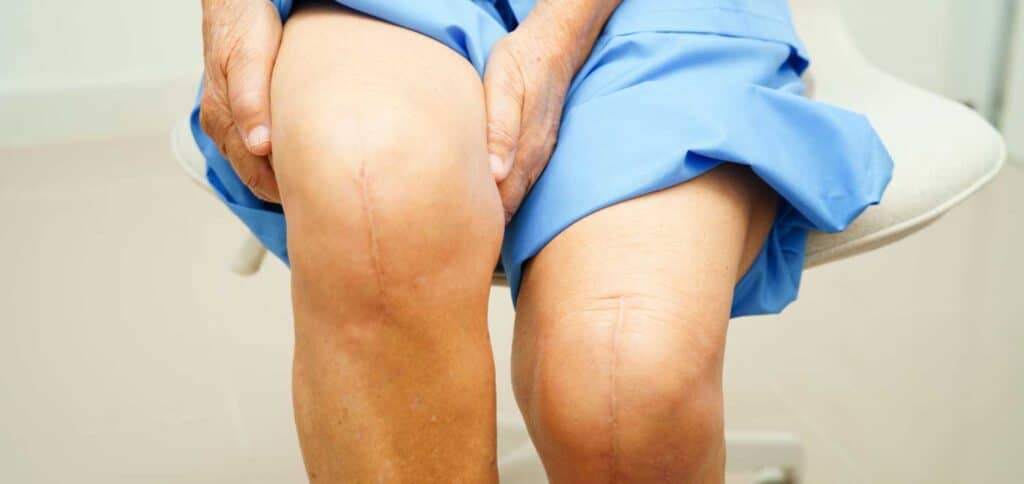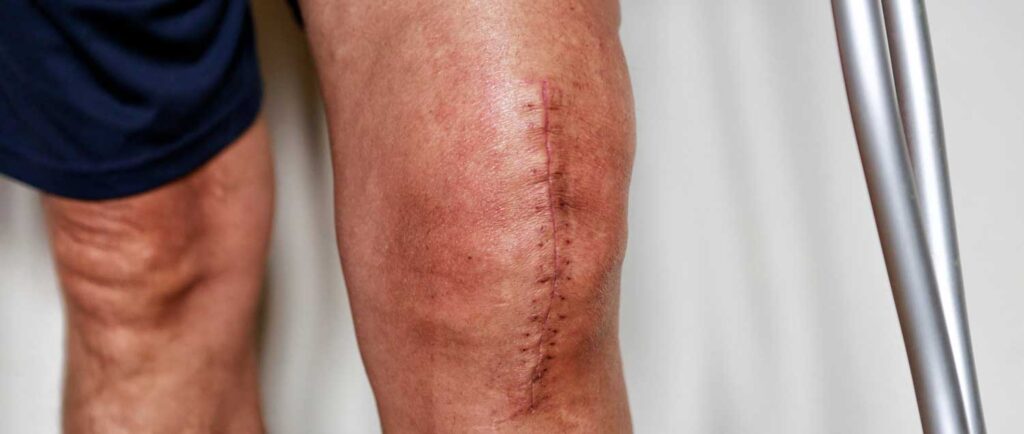The knee, being the most replaced joint in the body, undergoes a transformative journey with total knee replacement surgeries. These surgeries provide a beacon of hope for individuals suffering from severe knee pain or dysfunction. According to the American Academy of Orthopaedic Surgeons (AAOS), approximately 700,000 total knee replacements (TKAs) are performed annually in the U.S. This number is expected to grow due to an aging population and increasing rates of obesity.
According to the 2019 American Joint Replacement Registry and the AAOS, women account for 60% of total knee replacements in the U.S., while men make up 40%. The average age for undergoing a TKA is 67 years old. The procedure is most common in individuals aged 50 to 80 but can also benefit younger or older patients, depending on their condition.
This blog will explore what a total knee replacement entails, what recovery looks like, and how physical therapy is crucial in achieving the best outcomes.
Different Types of Knee Replacement Surgeries

Total Knee Replacement
A total knee replacement is a surgical procedure that involves removing damaged parts of the knee joint and replacing them with metal and plastic components. The tibia, femur, and patella are the primary structures involved. This surgery is most often performed to relieve pain in the knee and help restore function in patients who have severe arthritis or have a history of injury.
TKAs are highly effective, with studies showing that 90% of patients experience significant pain relief and improved function. Typically, a knee replacement lasts 15-20 years, with some lasting even longer depending on activity levels and rehabilitation adherence.
Partial Knee Replacement
A partial knee replacement—or unicompartmental knee arthroplasty—may be an option for patients with damage isolated to one side of the knee. These surgeries account for only 10% to 15% of knee replacements but offer significant benefits, including shorter recovery times and the preservation of healthy bone and tissue. Patients undergoing a partial knee replacement usually have shorter hospital stays and less required physical therapy visits.
Symptoms Leading to a Knee Replacement
Knee pain and dysfunction often stem from progressive wear and tear or injury. While symptoms vary, many patients experience challenges that significantly affect their daily lives, including mobility and comfort. Symptoms may include:
- Persistent pain and inflammation
- Swelling and tenderness
- Weakness or difficulty walking
- Limited range of motion
Common Causes of Knee Damage Leading to Replacement
Knee damage can occur due to several factors, ranging from chronic conditions to acute injuries. These underlying causes often lead to knee joint degeneration, requiring medical intervention.
- Osteoarthritis: Caused by the wear and tear of cartilage; the most common reason for knee replacements.
- Trauma: Injuries such as fractures or ligament tears can lead to long-term damage.
- Rheumatoid arthritis: An autoimmune condition that causes inflammation in the joints.
- Bone Diseases: Conditions like avascular necrosis that impact bone health.
How Physical Therapy Can Help with A Total Knee Replacement

Physical therapy (PT) should be complete pre-and post-surgery.
Pre-Surgery Physical Therapy
Engaging in a structured “pre-hab” program for 4 to 6 weeks before surgery can lead to better post-operative outcomes, including both pain and function scores, compared to no PT before surgery. Benefits of pre-hab include:
- Improved range of motion, flexibility, and strength.
- Familiarization with assistive devices, such as walkers or crutches.
- Setting realistic expectations for recovery.
- Building rapport with your physical therapist.
Post-Surgery Physical Therapy
Physical therapy is a cornerstone of recovery after a total knee replacement. The focus is on reducing pain, regaining mobility, and restoring strength.
The main goal of PT after a knee replacement is getting your range of motion back to normal. Your PT will help you work on bending and strengthening the knee to achieve this goal. You will continue to improve through stretches and passive motion exercises. Additionally, your PT will focus on knee pain and swelling management by using techniques like ice therapy and compression. Your PT will prescribe you strength exercises to bolster the surrounding muscles so they can better support the knee joint and balance exercises to prevent falls and enhance mobility. These exercises are tailored based on your home accessibility and personal goals.
Home vs. In-Clinic Recovery
Recovery settings vary based on individual needs and surgeon recommendations:
- Home recovery: Often for patients with adequate support and independence.
- Skilled nursing facilities: For patients requiring more assistance.

Find A Physical Therapist for Total Knee Replacement Near You
A total knee replacement is a highly effective procedure for those struggling with debilitating knee pain and dysfunction. Recovery is a journey, but with the support of a qualified physical therapist and a dedicated caregiver, patients can regain mobility, reduce pain, and significantly enhance their quality of life. Caregivers play a crucial role in assisting with daily activities, providing emotional support, and ensuring the patient follows the prescribed rehabilitation plan.
Whether you’ve had a total knee replacement or are planning to receive the procedure, receiving treatment from a qualified physical therapist is not just important – it’s essential for adequate recovery. Regular sessions with a physical therapist can significantly improve your mobility, reduce pain, and enhance your overall quality of life. Take the first step towards recovery by finding a physical therapy location near you.
Frequently Asked Questions
How long do you do physical therapy after a total knee replacement?
Physical therapy typically lasts three to six months, although complete recovery may take up to a year.
What is the hardest day after a total knee replacement?
Patients commonly report that day three post-surgery is the most challenging. This is when the anesthesia has worn off, and the body begins its healing process, often leading to increased pain and discomfort.
What is the best physical therapist for a knee replacement?
All licensed physical therapists are trained to provide effective treatment for TKA patients. However, therapists with orthopedic expertise or board certification in orthopedics may be particularly well-suited. Confluent Health’s “Physical Therapy Near Me” tool can help locate qualified professionals in your area.

